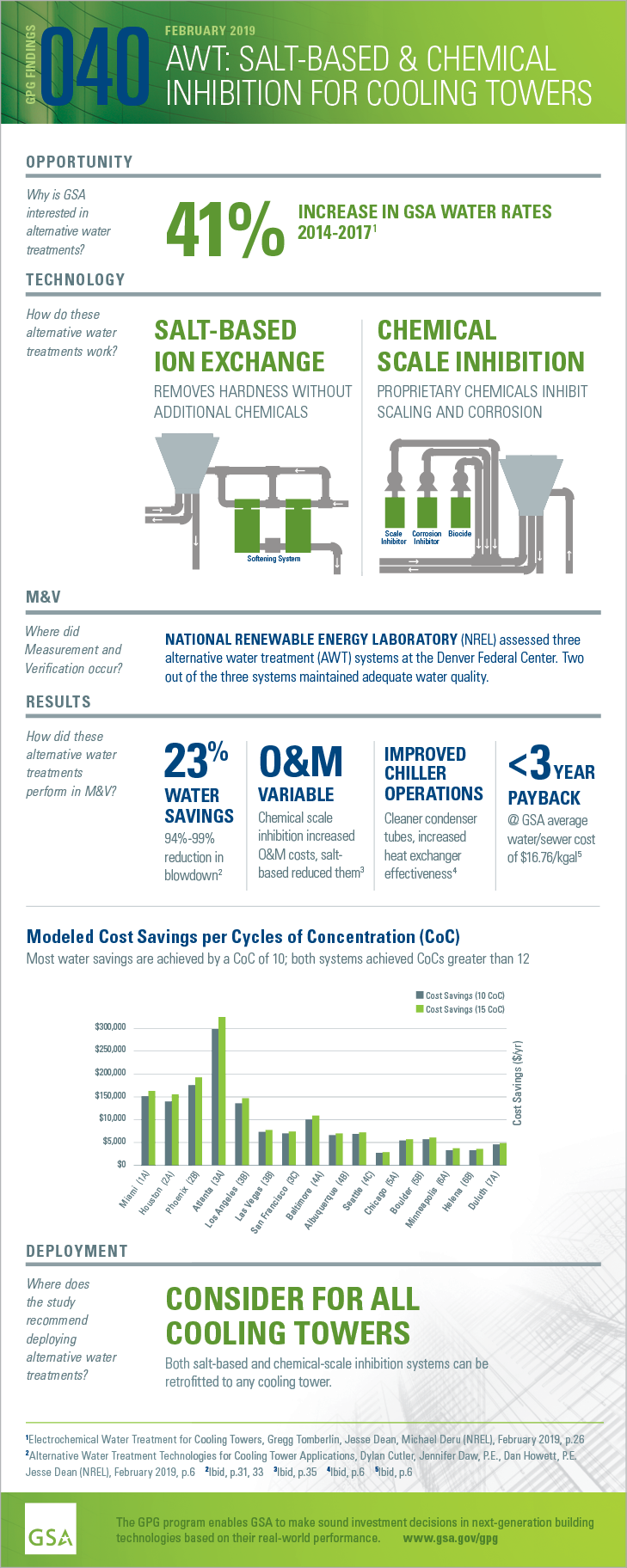AWT: Salt-Based & Chemical Inhibition for Cooling Towers
Three different alternative water treatments (AWTs) were evaluated at the Denver Federal Center by the National Renewable Energy Laboratory.
Two out of the three were found to
- maintain adequate water quality,
- lower water and sewer costs, and
- improve chiller operations.
View full-size infographic. [PDF - 247 KB]
Reference above to any specific commercial product, process or service does not constitute or imply its endorsement, recommendation or favoring by the U.S. government or any agency thereof.
WEBINAR
Last updated: Dec 7, 2023
Top

 U.S. General Services Administration
U.S. General Services Administration
